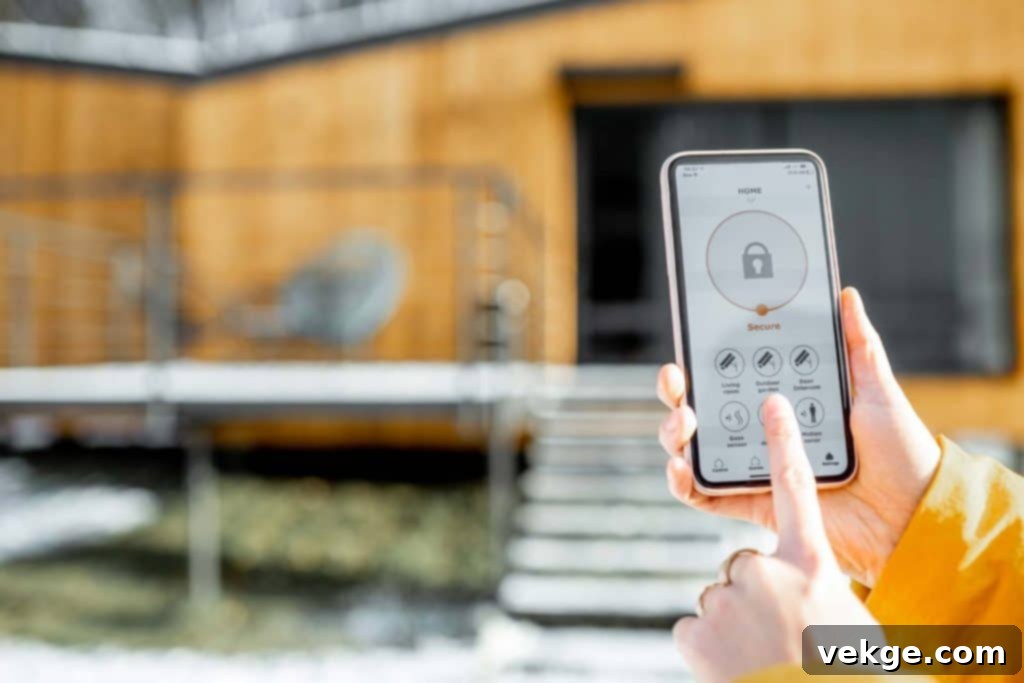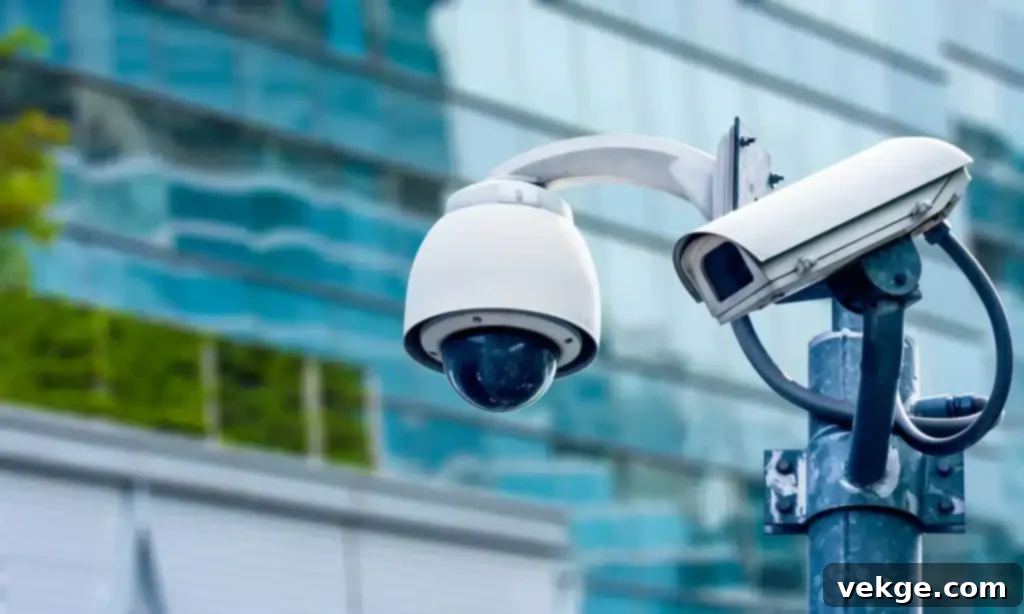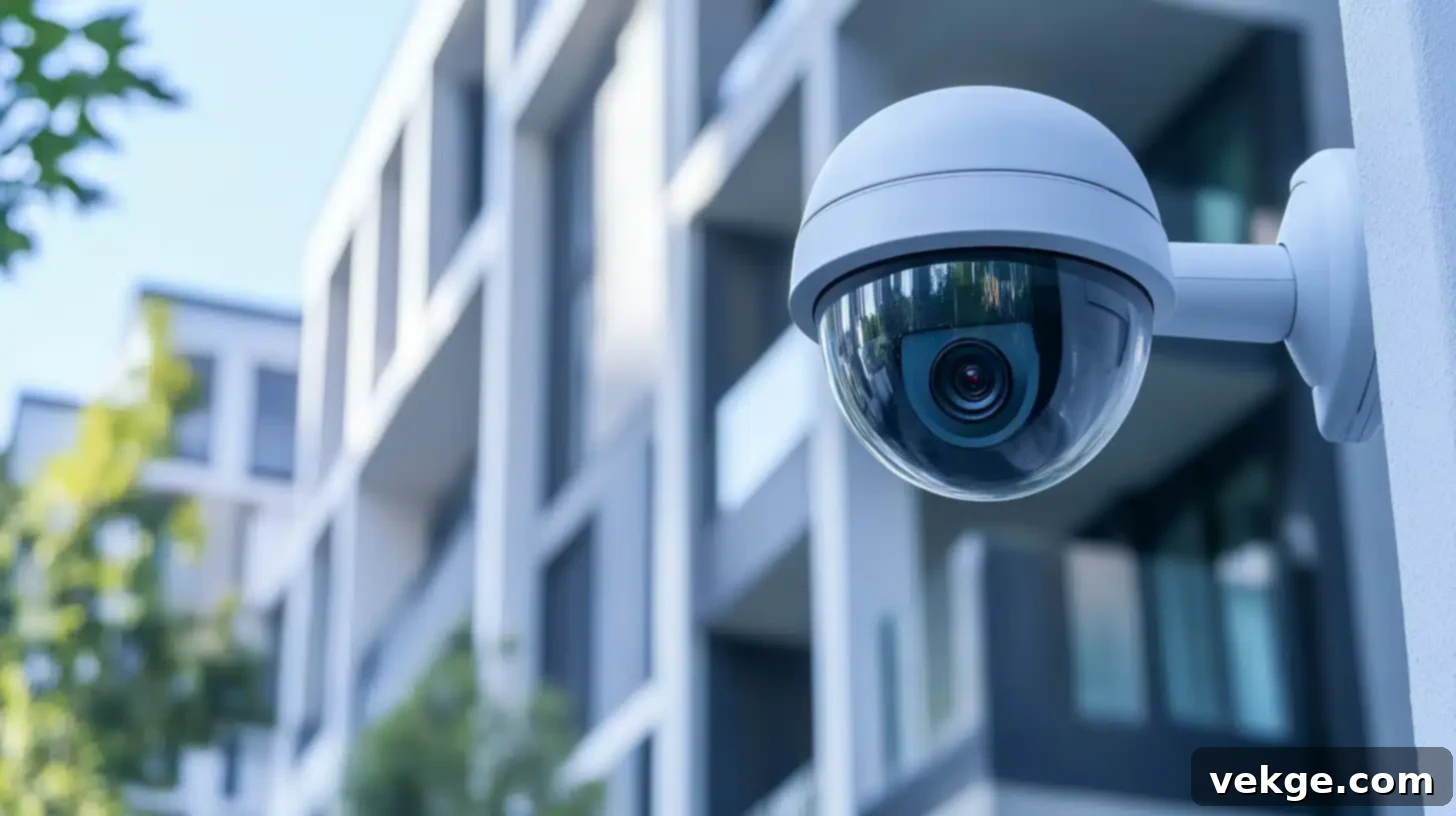The Ultimate Guide to Smart Home Security: Protecting Your Connected Devices and Privacy
In recent years, the landscape of modern living has been dramatically transformed by technological advancements, leading to a significant surge in the prevalence of smart homes. For those new to the concept, a smart home seamlessly integrates a network of connected devices, allowing for remote control and automation of various household functions. These innovative homes offer a myriad of automation services, from managing door sensors and motion detectors to controlling appliances and, critically, robust security systems.
The allure of a smart home is multifaceted: it promises unparalleled convenience, potential cost savings through optimized energy consumption, and enhanced energy efficiency. For a prospective home buyer, transitioning to a smart home can undoubtedly be an appealing and forward-thinking decision. However, with this technological leap comes an increasing awareness of potential smart home security vulnerabilities, which every current and future owner must understand and address proactively.
Understanding Smart Home Security Risks: A Deep Dive into Vulnerabilities

While the benefits of implementing a smart home are numerous and exciting, it is equally important to critically examine the potential downsides, particularly regarding security. The most significant drawback, though sometimes considered a rare occurrence, is the inherent major security risk associated with interconnected devices. The vulnerabilities present in smart home technology bear a striking resemblance to those that plague personal electronic devices, but with potentially more severe real-world consequences. Key issues include:
- Default Passwords: The Open Backdoor: Many smart devices arrive pre-configured with weak, easily guessable, or factory-set default passwords. These often generic credentials (e.g., “admin,” “12345,” the device name) are publicly known or simple for sophisticated hacking software to crack through brute-force attacks. Leaving these unchanged is akin to leaving your front door unlocked.
- Unpatched Software: A Ticking Time Bomb: Device manufacturers frequently release software updates and firmware patches to rectify identified security vulnerabilities and enhance performance. However, these updates often do not automatically install. If users fail to manually check for and apply these critical updates, their devices remain susceptible to known exploits, opening a potential gateway for malicious actors without the homeowner’s knowledge.
- Unsecured Wi-Fi Networks: The Invisible Threat: An open or inadequately secured Wi-Fi network acts as a direct conduit for unauthorized access to your entire smart home ecosystem. An attacker could potentially park near your home and, with minimal effort, gain control over your smart devices, intercept your data, or even launch further attacks on your network.
- Social Engineering Attacks: The Art of Deception: Attackers often don’t rely on complex code; instead, they exploit human psychology. Through social engineering tactics, they attempt to trick users into divulging sensitive personal information or granting them access to their devices. This could involve phishing emails, deceptive phone calls, or impersonating customer support, often by creating a false sense of urgency or claiming “something is amiss” with one of your smart home systems.
While a cybersecurity breach of a smart home might initially seem less critical than, say, a breach of your personal computer or smartphone, this perspective would be gravely mistaken. The ramifications of a security lapse within your smart home are both vast and potentially dangerous, extending far beyond digital inconvenience.
Firstly, by exploiting the digital presence associated with your home, criminals can amass a wealth of your sensitive personal information. This data can then be nefariously used to open fraudulent financial accounts in your name, make unauthorized purchases, or facilitate other forms of identity theft and financial crime, causing significant distress and financial loss.
Moreover, compromised smart home security systems pose a direct threat to your physical safety. If a criminal gains remote access to unlock your doors, disable your security cameras, or deactivate your alarm system, your home becomes vulnerable to invasion attempts. This puts you and your entire family’s physical safety and peace of mind at severe risk.
Essential Security Measures to Implement: Building a Digital Fortress
Safeguarding your family and your home in the digital age requires the implementation of robust and effective security measures that can withstand even sophisticated cyber-attacks. The following essential strategies are fundamental to achieving this critical goal:
Use Strong, Unique Passwords and Multi-Factor Authentication
The foundation of any strong security posture begins with powerful passwords. When creating credentials for your smart home devices and associated applications, it is paramount to avoid easily guessable information such as birthdays, pet names, children’s names, or common dictionary words and phrases. Instead, aim for a complex combination of uppercase and lowercase letters, numbers, and symbols. The longer and more varied the password, the exponentially more difficult it is for attackers to crack. Consider using a reputable password manager to generate and securely store unique, strong passwords for each of your devices, eliminating the need to remember them all.
Furthermore, if your smart home system or individual devices support multi-factor authentication (MFA) – often appearing as two-factor authentication (2FA) – activate this feature immediately. MFA adds an extra layer of security by requiring a second form of verification (e.g., a code sent to your approved phone via text message or an authenticator app) in addition to your password during a login attempt. This significantly reduces the risk of unauthorized access, even if your password is compromised.
Regularly Check for and Install Software Updates
As previously highlighted, a critical security risk in smart homes stems from the failure to apply timely software and firmware updates. These updates are not merely for new features; they frequently contain vital security patches that address newly discovered vulnerabilities. Make it a routine habit to regularly check for available software updates for all your smart devices and their controlling applications. Whenever possible and prudent, enable automatic updates to ensure your systems are always running the most secure versions.
The only caveat to automatic updates is in rare situations where specific devices have known stability issues or security threats that occur during or immediately after a new software installation. In such cases, it’s wise to research user feedback or manufacturer advisories before proceeding, but otherwise, prompt updates are crucial.
Secure Your Wi-Fi Networks with Advanced Protocols
Your Wi-Fi network is the backbone of your smart home, making its security paramount. Start by using a highly complex and unique password for your Wi-Fi, one that is distinct from your device passwords and challenging to guess. Crucially, ensure that WPA3 encryption settings are implemented on your Wi-Fi system. WPA3 is the latest standard, offering significantly enhanced security over its predecessors (WPA2), including stronger encryption and more robust protection against offline dictionary attacks (where an attacker tries multiple password guesses without directly interacting with your network). It typically allows only a single Wi-Fi password guess attempt from an offline device before requiring direct interaction with an online device, greatly hindering brute-force efforts.
For an additional layer of security, consider creating a separate guest network. This dedicated network provides internet access for visitors, completely isolating them from your primary personal Wi-Fi network and your smart devices. This not only limits the number of people who know your main Wi-Fi password but also segments your network, preventing potential compromises from guests’ devices spreading to your core smart home infrastructure. Furthermore, disabling the Wi-Fi Protected Setup (WPS) feature on your router can mitigate a known vulnerability that makes it easier for attackers to guess your Wi-Fi password.
Follow Best Internet of Things (IoT) Security Practices
Finally, as a general rule of thumb, adhere to broader Internet of Things (IoT) best security practices. These fundamental principles include:
- Least Privilege: Only grant trusted friends or family members access to your smart home devices and applications, and only for the specific functions they need. Regularly review and revoke access for individuals who no longer require it.
- Disable Unused Features: Deactivate any smart device features, ports, or remote access capabilities that you are not actively using. Minimizing the attack surface reduces potential entry points for hackers.
- Data Backups: While less common for device configurations, ensure you have backups of any important data or application settings associated with your smart home system, especially if it involves personal data storage.
- Vendor Reputation: Research the security reputation of smart device manufacturers before making purchases. Opt for brands with a proven track record of security, regular updates, and transparent privacy policies.
- Physical Security: Secure your physical smart devices. Ensure they are installed in tamper-resistant locations and consider the physical security of your router and other network hardware.
Going the Extra Mile: Home Security Cameras for Enhanced Surveillance

When it comes to paramount safety, maintaining a watchful eye on your property at all times is crucial. Integrating home security cameras into your smart home ecosystem offers an invaluable layer of protection, allowing you to remotely monitor your home from your smartphone, tablet, or computer if you ever suspect a security threat. These cameras serve as both a powerful deterrent to potential intruders and a crucial tool for evidence collection. There are several main types of home security cameras to consider, each with unique advantages:
- Indoor Cameras: Designed specifically for interior use, these cameras can be strategically placed in various high-traffic or vulnerable locations within your home, such as living rooms, entryways, nurseries, or hallways. Many offer features like two-way audio, motion detection alerts, and local or cloud storage options.
- Outdoor Cameras: Built to withstand the elements, outdoor cameras are typically weatherproof and more robust. They are installed on the exterior of your home to monitor entry points, driveways, yards, and other external areas of your property. Advanced outdoor cameras often include night vision, spotlights, and even siren capabilities.
- Pan-Tilt-Zoom (PTZ) Cameras: These versatile cameras provide an extensive field of view and dynamic control. PTZ cameras can be remotely manipulated to pan (move horizontally), tilt (move vertically), and zoom in or out, allowing you to survey a wider area with a single device. This remote controllability, often via your phone, makes them exceptionally flexible for monitoring large spaces.
When selecting cameras, consider features such as video resolution (1080p or 4K for clear images), night vision capabilities, local versus cloud storage options, two-way audio for communication, and integration with your existing smart home platform (e.g., Google Home, Amazon Alexa, Apple HomeKit).
Additional Security Measures to Consider: Building Layered Defenses
True home safety is about comprehensive preparedness, which includes having robust backup plans and multiple layers of defense. The following smart home security and cyber safety tips can help you fortify your home with extra layers of security, ensuring maximum protection:
- Integrate a Traditional Home Alarm System: While smart alarms offer modern convenience, integrating your smart home security systems with a conventional, hardwired home alarm provides enhanced protection. In the unlikely event that your smart home alarm system is digitally disabled or compromised, the traditional alarm can serve as a crucial fallback, ensuring continuous monitoring and deterrence. This layered approach significantly bolsters your overall security posture.
- Conduct Regular Security Audits: Proactive security involves understanding your vulnerabilities before they are exploited. Consider conducting regular security audits of your smart home network with the assistance of accredited cybersecurity professionals. These audits can help identify potential weaknesses, misconfigurations, and vulnerabilities within your devices, network, and software, providing actionable insights to strengthen your defenses.
- Educate Your Family Members on Cyber Hygiene: Technology is only as secure as its weakest link, and often, that link is human error. It is vital to ensure that every member of your household, from adults to tech-savvy teenagers, understands the paramount importance of smart home security. Educate them on best practices, such as the dangers of sharing Wi-Fi passwords or security information, recognizing phishing attempts, avoiding suspicious links, and understanding how to safely interact with smart devices. Regular family discussions about online safety can prevent accidental breaches.
Enhance the Security of Your Smart Home Proactively for Enduring Peace of Mind
A smart home offers a plethora of benefits, simplifying daily life and enhancing comfort. However, it becomes an issue the moment this sophisticated technology begins to work against your best interests due to security oversights. While the security vulnerabilities described throughout this guide may seem daunting, a proactive and informed approach can effectively mitigate these risks.
The hope is that these potential security challenges will never impact your day-to-day life. Yet, it is always better to be overprepared than underprepared when it comes to the safety and privacy of your home and family. Commit to staying up-to-date on the latest security threats impacting connected homes like yours. Maintain constant vigilance by regularly reviewing your device settings, monitoring network activity, and promptly addressing any unusual behavior. This continuous awareness allows you to identify and neutralize a potential security threat long before it has the chance to materialize.
When in doubt, or when dealing with complex security configurations, do not hesitate to consult with qualified security professionals. These experts can provide tailored advice, conduct thorough assessments, and help you implement comprehensive protections that effectively cover all the connected technology in your home, ensuring your smart home remains a sanctuary of convenience and security.
